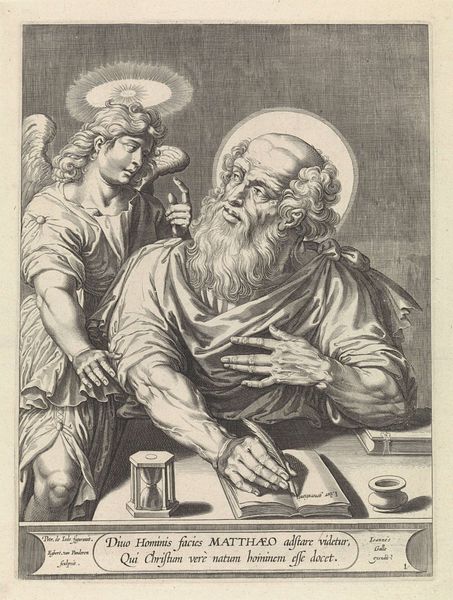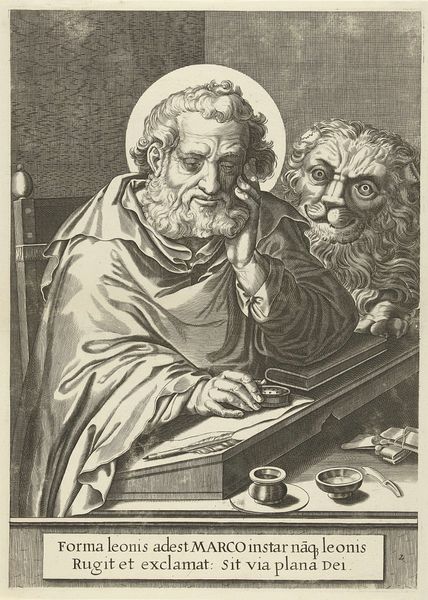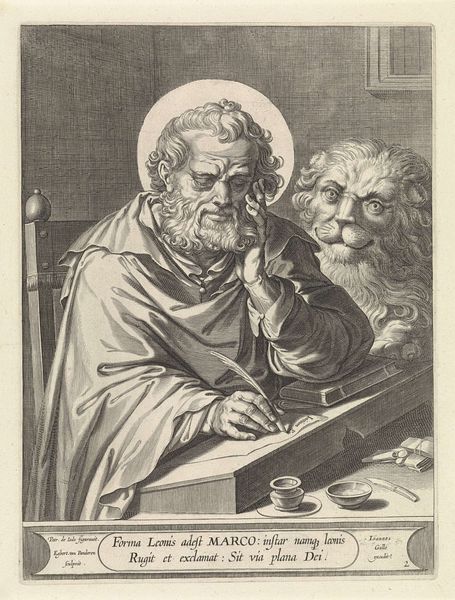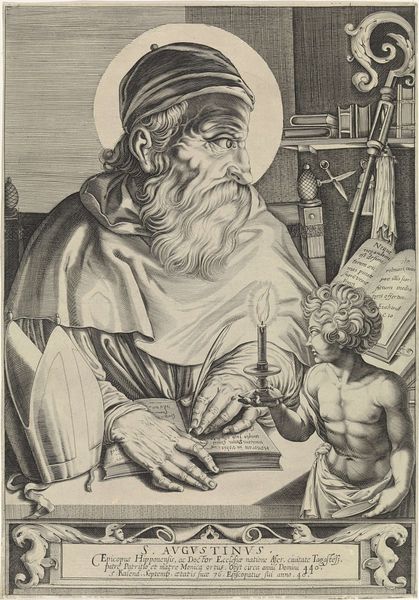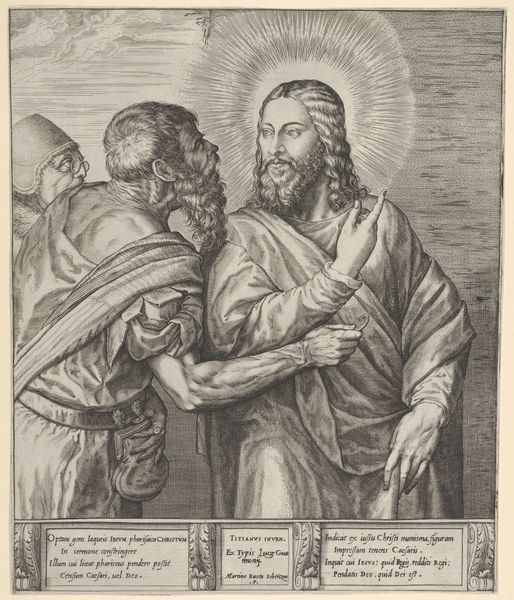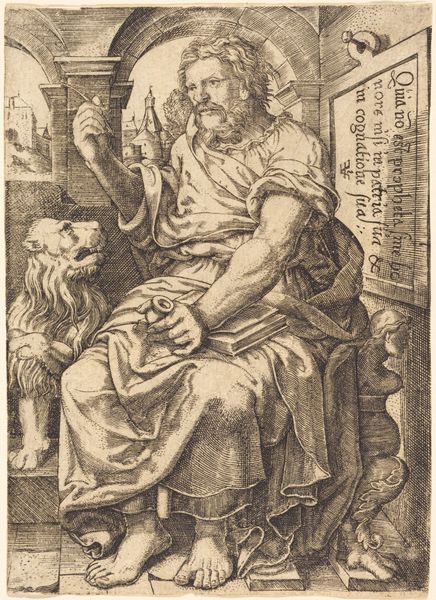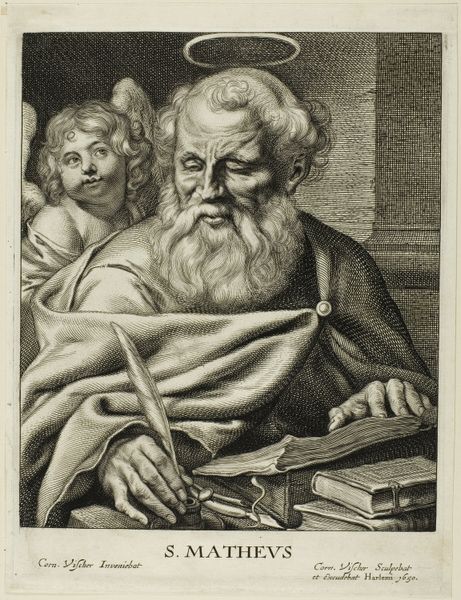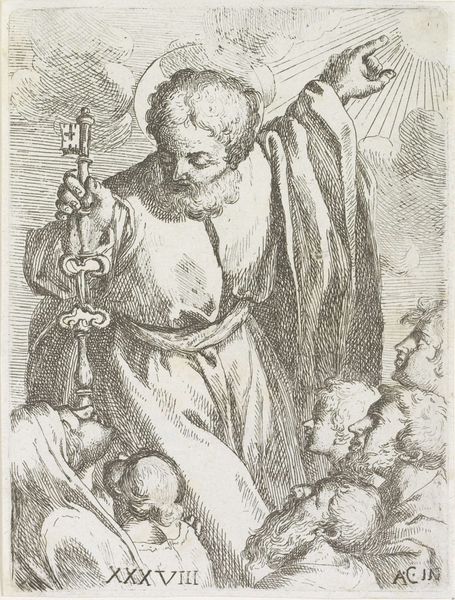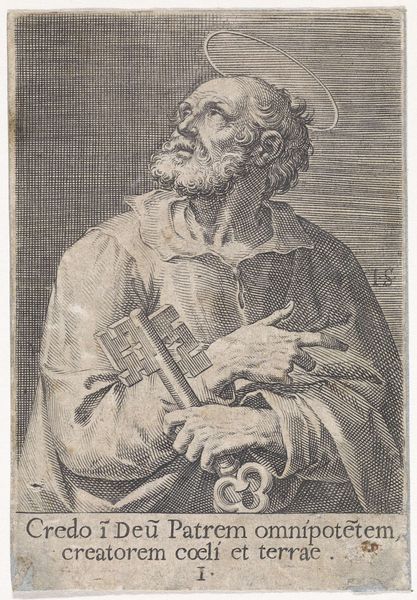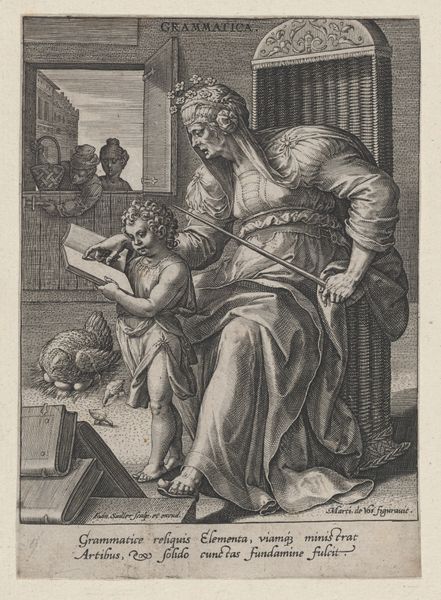
print, ink, engraving
#
portrait
#
baroque
# print
#
ink
#
history-painting
#
engraving
Dimensions: height 440 mm, width 312 mm
Copyright: Rijks Museum: Open Domain
Curator: This engraving, titled "Matteüs de evangelist," resides here at the Rijksmuseum and is attributed to François van den Hoeye sometime between 1601 and 1636. It depicts the Evangelist Matthew with an angel. What strikes you about it? Editor: Well, aside from how meticulously etched every line is—look at the folds in his robe, the feathers in the angel's wings—it’s the light that grabs me. The divine light source is almost tangible, contrasting sharply with the contemplative mood on Matthew's face. Curator: Yes, that's typical of the Baroque style. Note how this piece reflects the period's interest in intense emotional and spiritual states, a hallmark often employed in depictions of religious figures at the time. Engravings like this also facilitated the widespread dissemination of such imagery to an increasingly literate public. Editor: I also find it quite interesting how close the angel seems to Matthew. He has almost put his hand on his shoulder. This image almost visualizes divine inspiration being directly given. Curator: Indeed, these engravings acted as crucial propaganda tools in the religious and political conflicts of the time. They not only depicted biblical narratives but also reinforced specific theological interpretations aligned with Counter-Reformation efforts. Editor: It really does feel like history you can almost reach out and touch. The hourglass, the open book…each detail seems to invite a deep dive into his world. To know his struggles. Even his moments of divine grace. It brings him alive again. Curator: It certainly emphasizes the fusion of the sacred and the mundane, a compelling characteristic that made such artworks accessible and appealing, embedding ideological messages within a familiar context. Editor: What remains for me is a real sense of empathy towards Matthew. I find myself connecting to something almost transcendental by just reflecting on his face. Curator: Precisely, its power to evoke a spectrum of sentiments, all within the socio-political tapestry of the Baroque era, remains undeniable. Thank you for joining me today.
Comments
No comments
Be the first to comment and join the conversation on the ultimate creative platform.
